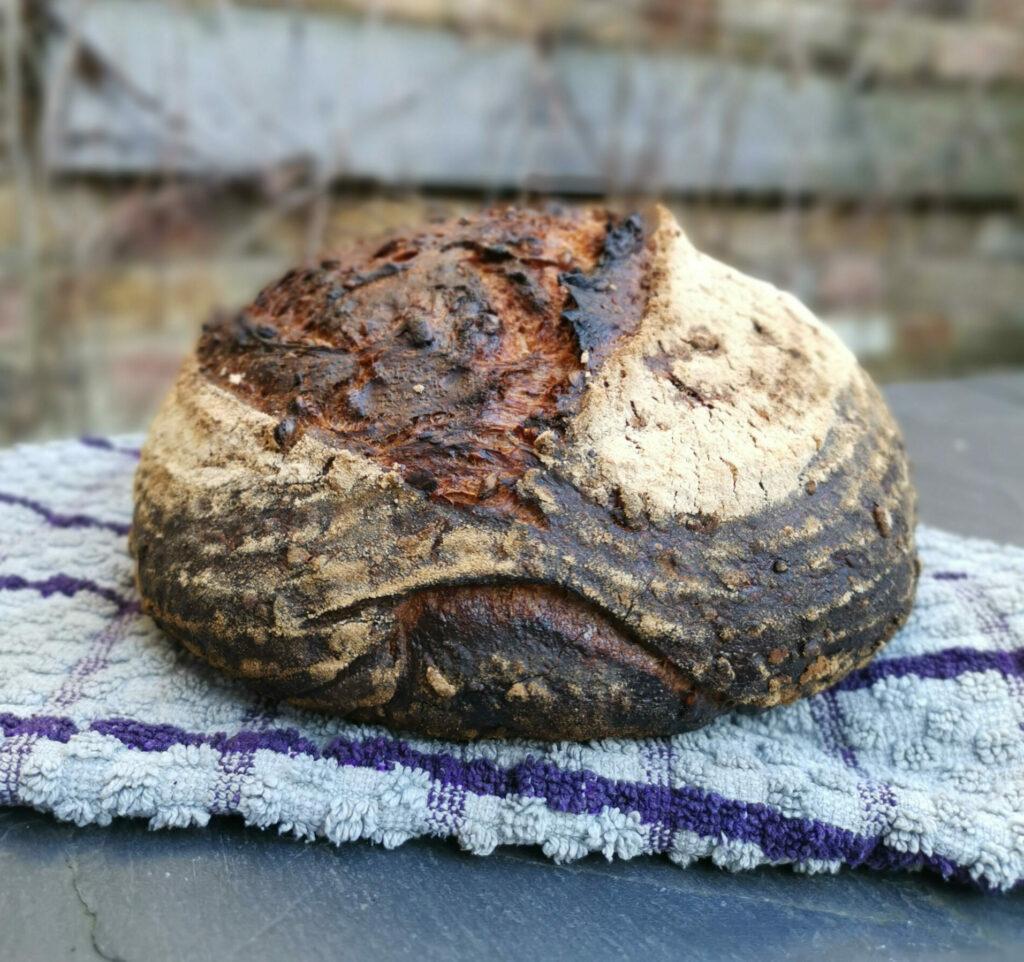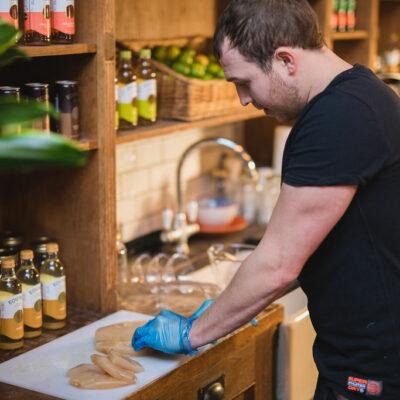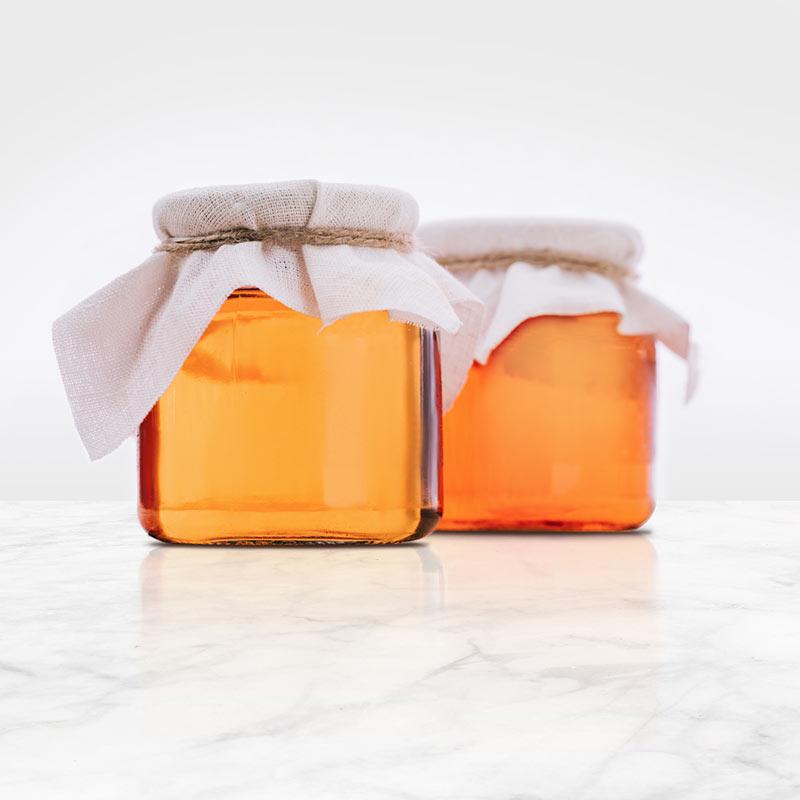Seeded Equinox Kombucha Sourdough
Fermented foods have been having something of a renaissance over the past few years, with sourdough, kombucha, kefir, kimchi, sauerkraut, natural wines, sour beers and cultured butters becoming increasingly big business on supermarket shelves, restaurant tables and inside our own fridges at home. Fermentation – the anaerobic process through which microorganisms such as wild yeast […]

Fermented foods have been having something of a renaissance over the past few years, with sourdough, kombucha, kefir, kimchi, sauerkraut, natural wines, sour beers and cultured butters becoming increasingly big business on supermarket shelves, restaurant tables and inside our own fridges at home.
Fermentation – the anaerobic process through which microorganisms such as wild yeast and bacteria break down sugars in food into gases, acid and alcohol –is considered not only to imbue comestibles and beverages with probiotic qualities that increase microbial activity in the gut leading to improved gut
health, but also to make certain foods more digestible. People who are gluten-intolerant can often tolerate sourdough because the gluten is broken down more fully during the fermentation process; lactose-intolerances can sometimes handle aged cheese for similar reasons.
Health benefits aside, fermentation makes things taste better. Simple as that. Every cheese toastie can be improved if it’s made on tangy sourdough, spread with funky cultured butter, and stuffed with punchy kimchi; all days are brightened up if they begin with a glass of ice cold sparkling kombucha.
And combining fermented foodstuffs (see aforementioned cheese and kimchi sourdough toastie) will therefore make them even more magical still, increasing their tang and oomph, and boosting their health benefits. So here’s my recipe for sourdough bread made with Equinox Kombucha, and the result was a lovely, active dough and a beautiful, super-sour loaf with a delicious layer of tangy bite. Perfect for making those toasties we were talking about…
By Martha de Lacey
www.marthadelacey.com
Instagram @marthadelacey
Time: 3 days
Makes 2 loaves
INGREDIENTS
- 600g strong white bread flour (I use organic, stoneground flour from British mills including Gilchesters, Stoates and Shipton Mill, but Marriages, Carrs, Doves, and many high-end supermarket brands are also fine)
- 200g wholemeal/ malted / granary bread flour (I use Gilchesters’ farmhouse, Stoates’ Maltstar or Shipton Mill’s malted brown bread flour,
depending on my mood) - 100g dark rye flour
- 100g spelt flour
- 1T lively sourdough starter (see Making your Starter, below)
- 800ml Equinox Kombucha, Original flavour, room temperature
- 20g sea salt (I use fine sea salt, you can of course use pink Himalayan sea salt crystals if you wish, but you cannot use ‘table salt’, it’s iodised and will inhibit fermentation.)
- 100g toasted seeds (I prefer sesame, but also like sunflower and pumpkin, and, ideally, mixed)
- A sprinkling of plain flour
- A sprinkling of millet flour or brown rice flour
OTHER
- One large mixing bowl
- Dough scraper
- Two proofing baskets (bannetons)
- Baker’s lame (razorblade)
- Large cast iron pot / Dutch oven
METHOD
1. Two days before you want to make your bread, just before you go to bed, combine one spoonful of your sourdough starter with 100g of strong wholemeal bread flour and 100g of tap water.
2. Mix until no dry flour remains, cover, and leave at room temperature.
3. The next morning, in a large mixing bowl, combine all four flours with 700ml of Equinox original kombucha. It must be room temperature, not refrigerated, or the temperature of the dough will drop too low. (Note: In the height of summer, use Equinox kombucha from the fridge; it will bring down the temperature of the dough and prevent the dough from fermenting too fast.)
5. Mix with your hands until no dry flour remains. Really scratch along the bottom of the bowl to make sure. You are not trying to knead the dough, just mix it.
6. If the dough feels very stiff, add a splash or two more kombucha in 50ml splashes. All flours absorb different amounts of water, so start with 700ml and work up. Do not add more flour. Do not add more than 800ml unless you are very experienced, as the dough will become too wet and difficult to handle.
7. Continue mixing until the dough feels a little wetter than biscuit dough, but drier than cake batter.
8. Clean down the side of the bowl using a plastic scraper; any bits left on the side will dry out and make your bowl difficult to clean.
9. Cover your bowl and leave at room temperature. Do not let the dough get too cold or too hot. 24C is perfect.
10. After two hours, add your 200g of prepared starter. It should be lovely and bubbly. Using your hands, squish it into the dough until it’s fully incorporated.
11. After one hour, sprinkle the salt over the dough and, with a wet hand, squish it into the dough, really mixing it and squeezing it well. You cannot over-mix it with your hands. Cover and leave for 30 minutes. Add the seeds and do the same.
11. Every 30 minutes, for the next four hours or so, perform a series of ‘stretch and folds’ on the dough, stretching it up and over onto itself, turning the dough and repeating until the dough feels tight. Watch
YouTube videos to see how this is done.
12. Over the next four hours the dough will begin to get more elastic, less wet, fuller and tighter. You need to use your intuition to know when it’s fully fermented and ready to shape, which comes with practice. A good indication that it’s getting there will be a dough that feels puffy and holds it’s shape, and has bubbles around the edges of the bowl. This can sometimes take three hours, sometimes six, you just need to practice and learn when the dough is ready. Factors to change this time period include which flour you’ve used, how warm the day is, how active your starter is, how much kombucha you’ve added.
13. After four hours or so, divide the dough in half using a dough scraper and shape into two neat rounds using your scraper and hand.
14. Leave uncovered for 30 mins.
15. Dust the top of the dough balls with plain flour, flip them over and shape them to tighten. Watch YouTube videos to get an idea of how to do this.
16. Dust the tops of the shaped loaves and the bannetons with brown rice flour or millet flour to stop the loaves sticking. Place loaves seam-side up.
17. Leave to rest at room temperature for 30 mins.
18. Put in the fridge, uncovered, for at least 14 hours but no more than 48.
19. The next day, or whenever you wish to bake your bread, heat your oven up to 250C with a cast iron pot inside for 40 minutes.
20. After 40 minutes take one basket out of the fridge and very carefully lower the dough, seam side down, into the cast iron pot. Score the top with a baker’s lame (razorblade) NB: do not put the basket in the oven! Take extreme care, the cast iron pot is very, very hot.
21. Put the lid on, bake for 30 mins.
22. Remove the lid and bake for another 8 mins.
23. Remove the loaf and leave to cool on a rack for at least one hour to
continue cooking
Making your starter
DAY 1
1. Mix 50g strong bread flour (I use wholemeal flour, you can use white or rye, or a mix) with 50g water in a jam jar until no dry flour remains. Secure lid, but not too tight. Leave at room temperature.
DAY 2
1. Add another 50g strong bread flour and 50g water. Mix until no dry flour remains. Secure lid, but not too tight. Leave at room temperature.
DAY 3
1. Repeat Day 2 steps.
DAY 4
1. You should begin to see bubbles. Your starter is now active.
2. Now, discard all but 1T of your starter, then feed it another 50g flour and 50g water.
3. Every day, do the same: discard and feed.
4. When you need 200g of starter for the recipe, take a spoonful of starter out of the jar and feed it 100g flour and 100g water, and leave it, covered, at room temperature, overnight. The next morning you will have 200g starter ready to use in your bread recipe.










